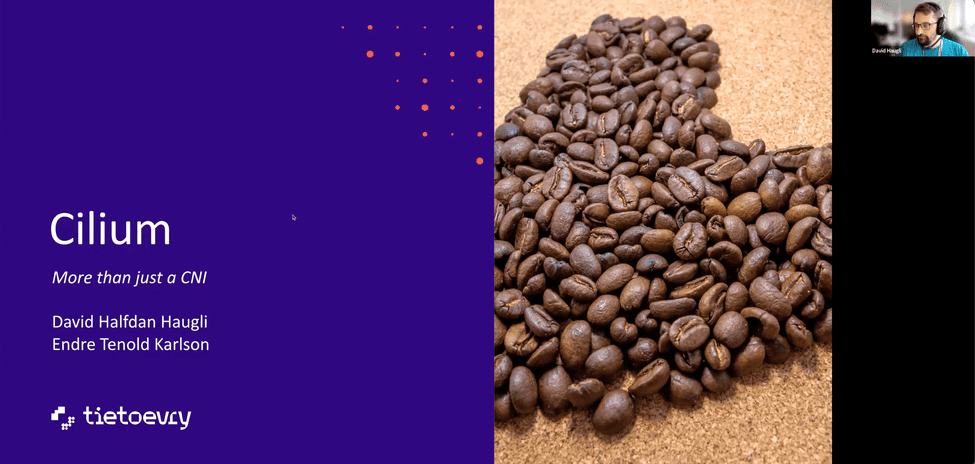Reducing Kubernetes tool sprawl: Tietoevry uses Cilium and Hubble
Tietoevry uses Isovalent Enterprise for Cilium to have advanced network policies (DNS!), reduce tool sprawl, and get the necessary insights to monitor the various SLAs.

In this video, learn how Cilium and Hubble can help IT service providers with many teams and clusters to standardize on a powerful, fully cloud-native network stack.
Watch the recording now!
Join David and Endre from Tietoevry Industry in this on-demand webinar to see how Isovalent Enterprise for Cilium made daily Kubernetes operations this much easier – especially in the morning, before the first coffee.
There are tons of CNIs. But when you want to go into production, you need something more, with a roadmap, a real plan of the future, and the right feature set to standardize upon.
At Tietoevry Industry, an IT service provider with 24,000 employees and an annual turnover of EUR 3 billion, a platform team that runs more than 30 Kubernetes clusters with hundreds of applications identified Isovalent Enterprise for Cilium as the network stack for their clusters.
Tune in to learn from David and Endre how Isovalent Enterprise for Cilium enabled them to overcome tool sprawl, eased the challenges of app modernization, helped with migrating apps to the cloud, and supported the integration with the wider environment.
You will learn:

